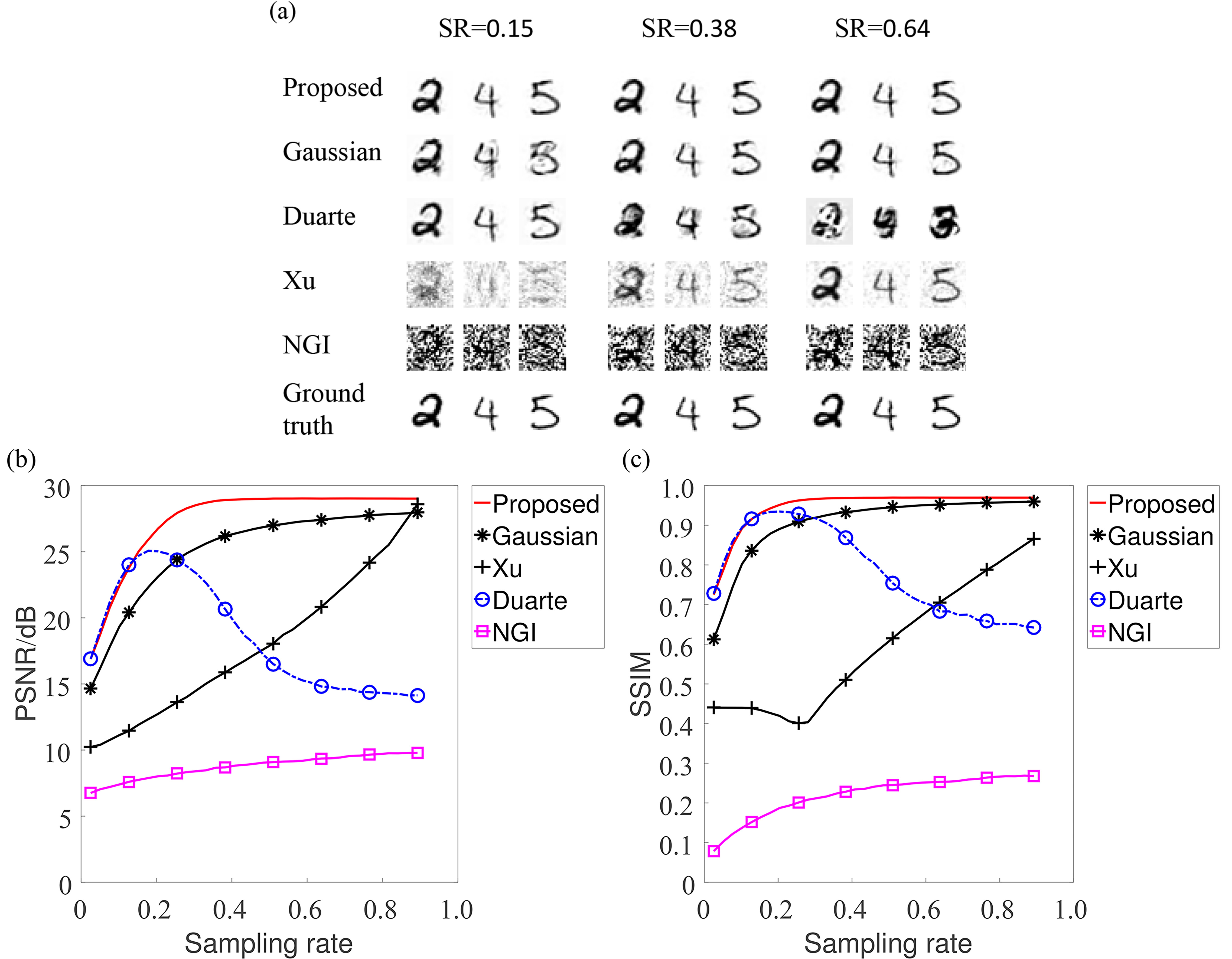Ghost imaging (GI) is a novel imaging technique based on the correlation of light intensity fluctuations. In recent years, it has attracted a lot of interests owing to its high detection sensitivity, non-local imaging property and the ability to acquire high-dimensional information.
In GI, light fields with random-fluctuating intensities are commonly used to illuminate the imaging target, which generally leads to unsatisfactory imaging quality in the case of limited number of practical samplings. From the perspective of communication, the imaging process of GI can be regarded as an encoding and decoding process of the imaging target. In communication systems, optimizing encoding codes is a popular way to enhance the performance. Hence, the GI performance can also be improved by optimizing the light-intensity fluctuations. Previous studies, however, either lack exploitation of image priori or involve complex computation; besides, some of them are not applicable to a successive sampling scenario.
Recently, researchers from Shanghai Institute of Optics and Fine Mechanics, Chinese Academy of Sciences, in collaboration with teams from Fudan University, made great progress in optimizing light intensity fluctuations of GI. This study was published in Optics Express.
In their study, they proposed to optimize the light intensity fluctuations by minimizing the mutual coherence of the equivalent sampling matrix, i.e., the product of the sampling matrix consisting of light intensities and a sparsifying basis.
Firstly, dictionary learning was utilized to obtain the sparsifying basis which incorporated image statistical priori. Then, the problem of mutual coherence minimization was theoretically formulated as a Frobenius-norm minimization problem. Finally, a concise closed-form solution of the sampling matrix, which was easy to calculate and consistent with the successive-sampling character of GI, was derived.
The superiority of optimized light intensity fluctuations was demonstrated with both simulations and experiments. Results showed that the proposed method could lead to better imaging quality (up to 4dB gain of PSNR) compared to existing optimization methods, especially in the case of lower sampling rates.
This study provides an effective paradigm for optimizing light intensity fluctuations in GI with respect to image statistical priori, which can be used for high-quality imaging of specific targets with fewer number of samplings.

Comparison of imaging results via light intensity fluctuations from different optimization methods(Image by SIOM)
Article website:
https://www.osapublishing.org/oe/abstract.cfm?uri=oe-27-20-28734&origin=search
Contact:
Mr. CAO Yong
General Administrative Office
Shanghai Institute of Optics and Fine Mechanics, CAS
Email: caoyong@siom.ac.cn